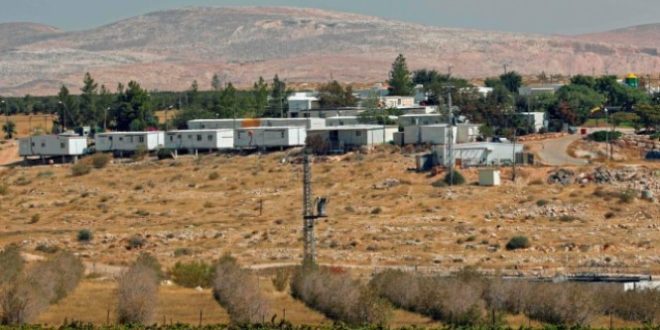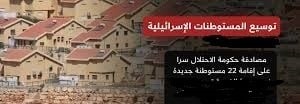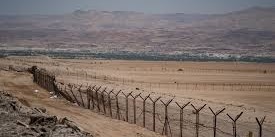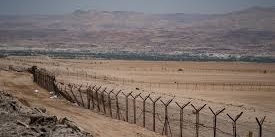By: Madeeha Al-A’raj
The National Bureau for defending land and resisting settlements ( nbprs ) stated in its latest weekly report , that Israeli Occupation State considers settlers in the occupied Palestinian territory as a tool for imposing policies against the Palestinians, and a defense line in the West Bank, including the occupied Jerusalem. This was and still is obviously seen in the suize harmony between the settlers’ gangs and the occupation forces since Ariel Sharon was Minister of Agriculture in the Netanyahu’s government, as he called on the settlers to occupy the hilltops in the West Bank, and in the Bennet’s government as well.
Settlers repeated attacks on the Palestinians, their property and crops are taking place under the protection of the occupying army. They are the stockpile of this state and its strategic tool in seizing Palestinian lands. Knowing that the land that are not seized by its military laws as a first step and legitimized by its judicial system and courts as a second step, will be seized by settlers’ violence, arrogance, and attacks on Palestinian lands and properties. This is also obviously shown in the latest report issued by B’Tselem, entitled “The State’s Control of Lands in the West Bank through settlers’ violence”, as the organization revealed that based on a sample of five outposts, that the settlers succeeded through their systematic attacks in seizing 38,000 dunams and preventing the alestinians from accessing them.
The report also mentioned the names of the areas, are: Yatta area in the southeast of Mount Hebron, the area southwest of Mount Hebron, the Jordan Valley area and the area west of Ramallah, and the area west of Nablus. The Settlement Association, Amna, stated that the 150 outposts and settlement farms that are spread throughout the West Bank control 200,000 dunams, twice the area of the built-up land of settlements.
It is known that the occupying power seized more than 2,000,000 dunams of the West Bank’s lands in favor of settlement, and established more than 280 settlements and outposts on them, excluding Jerusalem, inhabited by nearly half a million settlers, including 158 settlements officially recognized by Israel and about 130 outposts that are not officially recognized, but acknowledges their actual existence and their need to settle their situation. A third of them have been established in the last decade, classified as settlement farms.
Within the context of the news in the Israeli media, the “Israeli Peace Now Movement” called on Israeli Defense Minister, Benny Gantz to unveil the cover from the settlers, and stop their crimes and violations against defenseless Palestinians and their lands and crops. The movement clarified that these attacks are carried out under the protection of the occupation army and target the weak sector of the Palestinians in villages and fields during the cultivation of their lands or picking olives.
However, these acts of violence carried out by settlers, are not exceptions, but are part of a strategic activity that the occupying state allows and participates in. The phenomenon of settlement outposts was established, as is well known, in violation of even Israeli law, but with the support, protection and government funding at the same time. The long-term result of these actions is the dispossession of more and more lands from the hands of the Palestinians throughout the West Bank, which facilitates the occupation control of the West Bank and its resources.
On the other hand, the occupation government proceeds with its plans and policies to fully control Jerusalem, reduce the number of Palestinians in it, and in return increase the number of settlers in the city as it demolished about 84 homes in Silwan to the south of the Al-Aqsa Mosque, under the pretext of expanding what it calls the “peace forest” built there. Thus, about 600 Jerusalemites living there are threatened of displacement, and their fate is unknown, knowing that the area extends southwest of Silwan is about 310 dunums, and is inhabited by 1,050 Jerusalemites, whose owners had previously received demolition orders, under the pretext of building without licenses.
As for the occupation’s settlement activities in Jerusalem, the Israeli real estate company, Chimini Properties, has launched a campaign to market 400 settlement housing units to be built in the “Nof Zion” settlement built on the slopes of “Jabal Mukaber” town, east of occupied Jerusalem, next to what is known as the Commissioner’s Palace Park in the center of the Jabal Mukaber Neighborhood. The director of the company, Audi Rigones, was quoted as saying: “The new units overlook the most beautiful views of Jerusalem, including the Mount of Olives and the Old City, and hotels and a large commercial center will be built nearby. This new plan includes a qualitative shift, to become a Jewish neighborhood Raqiya, to bear the same name as the Nof Zion settlement built on Palestinian lands east of Jerusalem. It is reported that last year about 90 settlement units were built in it.
In Ramallah, the Risan Mountain is still in danger as it has recently witnessed confrontations between Palestinian citizens, and the occupation forces and settlers due to its strategic importance. The occupation authorities seized 5 mountainous dunums of Jabal al-Raysan lands in the town of Ras Karkar and Kafr Nima, northwest of Ramallah. This burglary decision was accompanied by a map showing the location of the land and a site from the commander of the Israeli army in the West Bank, Yehuda Fox. Jabal al-Raysan is located northwest of Ramallah, in the middle of the villages of Ras Karkar, Kharbatha Bani Harith, Kafr Ni’ma and Deir Bze’, and for a long time it remained an outlet for these villages and a haven for their residents, as they get boring.
List of Israeli Assaults over the Last Week Documented by the National Bureau:
Jerusalem:
- Storming the Al-Isawiya town, northeast of the occupied Jerusalem, and filming a number of residential facilities and streets in addition to handing demolition notices and summonses to attend before the municipality including old residential buildings under the pretext of not having a building permit.
- Demolishing several facilities in the Abu Al-Shahid junction area in the town of Al-Ram, north of occupied Jerusalem including the Al-Rehab supermarket, vegetable store, scrap car showroom, and a gas station.
- Notifying of demolishing two agricultural barns in the lands of Al-Isawiya town.
- Dismantling two dwellings and 5 agricultural facilities near the neighboring town of Al-Zaeem, seized them as well.
- Forcing a citizen to demolish his own house in the Ras Al-Amoud neighborhood otherwise he will be paying high fines under the pretext of not having a building permit.
- Storming the western neighborhood of Sheikh Jarrah and punctured the tires of 13 vehicles, including two diplomatic vehicles.
Hebron:
- Demolishing a 600 m2 barn used as a warehouse for selling vehicle parts, near the settlement of Beit Hagai on the citizens’ lands as well as uprooting more than 130 fruitful almond trees, bulldozed agricultural lands with an area of five dunams in preparation for the expansion of the settlement Karmi Tzur in Beit Ummar, north of Hebron.
- Torching 50 olive trees and erecting two mobile homes in lands located in the Sarara area in the town of Al-Shuyoukh, northeast of Hebron.
- The injury of the Engineer Mutassim Al-Mashni Al-Halaiqa as a result of the Israeli settler attack against the team work on the land settlement project in the town of Al-Shuyoukh.
- Preventing farmers from working on their lands in the Tabqa area, southwest of Hebron, in addition to stopping the digging work in the Tabqa area, west of the Dura town.
- Preventing citizens from working on their lands under the pretext of being in area C between the villages of Deir Samet and Beit Awa.
- Closing the road leading to the Shaab Al-Butm area, east of Yatta, with the aim of expanding the settlement, photographed the citizens buildings as well.
Bethlehem:
- Notifying of stop construction and all forms of work in the Abu Sud area in the town of Al-Khader, south of Bethlehem, in addition to handing the citizen Mahmoud Ali Saleem Mosa a notice prohibiting the construction or any change in the 100 donum area.
Ramallah:
- Notifying the Bedouin community of Al-Quboun with demolition, near the village of Al-Mughir, north of Ramallah.
- Storming the areas of “Al-Harayeq Al-Shamali”, “Gibreas” and “Baten Al-Tin” in Ni’lin , and notifying to demolish a water well, a room and a retaining wall, in addition of notifying of stopping work in 9 buildings, 8 of which are under construction.
- Closing the entrance to the town of Turmosaia, north of Ramallah, and preventing citizens from entering or leaving it, in addition to chanting insulting slogans against the Palestinians.
- More than 50 settlers stormed the “Ras Al-Jabal” area in the village of Medea, west of Ramallah, and performed Talmudic rituals, carried out a provocative tour in the nearby bushes as well.
Nablus:
- Injuring citizen, Nasser Abu Al-Ezz with fractures, during an attack by the Israeli settlers in the town of Hawara, south of Nablus. And 3 citizens as a result of an attack by settlers in the lands near the road between Jenin and Nablus, near Burqa village, north of Nablus in addition to threw stones towards the citizens’ vehicles on the Jenin and Nablus road, which led to the destruction of four of them.
Salfeet:
- Uprooting 250 olive trees and bulldozing large areas of agricultural land, in the Ras area, west of Salfit under the pretext of being in area C.
- Bulldozing large areas of agricultural land and demolishing stone terraces in the Ras area, west of salfit , it should be noted that the bulldozing operations included the construction of roads from the citizens’ lands to connect the outpost of Al-Ras’ settlement with the “Industrial Ariel” settlement; In preparation for the establishment of the so-called “Greater Ariel”.
Jenin:
- Carrying out military maneuvers for two days in a row near Jenin in the West Bank, in the vicinity of the villages of Tora, Taybeh and Dahr al-Abed in Jenin.
Jordan Valley:
- Storming the Khirbet Humsa Al-Fawqa in the northern Jordan Valley, and photographing the citizens’ facilities, which include residential and agricultural facilities in addition to storming the Khirbet Al-Hadidiya and handing notices which allows the citizen Abdel Rahim Hussein Bisharat to object to the decision to demolish residential and agricultural facilities he owns within only three days.
 المكتب الوطني للدفاع عن الارض ومقاومة الاستيطان منظمة التحرير الفلسطينية
المكتب الوطني للدفاع عن الارض ومقاومة الاستيطان منظمة التحرير الفلسطينية




